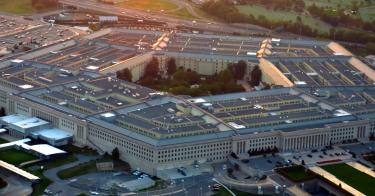With a new administration in town, former and current defense leaders are speaking more openly and fully about the challenges facing our armed forces. Yet, despite their testimony—and an ever-increasing cascade of facts pointing to a precipitous decline in military capacity and capability over the last seven years—many in Washington doggedly insist the deterioration in military readiness is: a. imaginary, b. overstated, or c. too sensitive to even discuss openly.
However, as John Adams observed, “Facts are stubborn things.” and in the case of the military, there is a growing inconvenient body of evidence pointing inexorably to the conclusion that America’s military is too small, unready, and under-equipped for the challenges associated with being a global power. Military personnel—from the junior officers in tactical units to the most senior service chiefs of staff—now routinely describe a military overtaxed by frequent deployments, crippling personnel shortages, outdated equipment and shortages of critical spare parts and munitions.
The “naysayers,” those trying to muddle or dispute the clear signals being sent by our military leaders, typically pursue one of the following lines of argument.
“America’s military doesn’t have a readiness crisis.” Military leaders have testified that: only three of 58 Army brigade combat teams are ready to fight tonight; less than half of the air force is ready; the marine corps has not met its goal for flight hours since 2012, and half of the navy’s aircraft are grounded for parts or maintenance. Critics denigrate this testimony as either “exaggerated” or “self-serving.”
One former defense official urged that Congress be “skeptical” of these warnings from top brass, suggesting that they are just seeking more dollars. But it’s not just the generals and admirals reporting readiness problems. Fact-finding trips from across the military also conclude that our military is stretched to the breaking point.
The problem does not stop with “just” personnel and equipment. Many essential facilities—naval bases, air stations, and forts—are being used well past their life span. And some of our forces are dealing with critical shortages of munitions, which are not being replaced as quickly as they are being used in current operations.
We already spend nearly $600 billion a year on defense, and that should be plenty.” This argument suggests that, because $600 billion is a really big number, it simply must be sufficient to meet our needs. But compared to what we have spent in the past, whether measured as a percentage of the overall federal budget or of Gross Domestic Product, defense spending is down substantially.
Critics often couple this argument with the interesting but irrelevant factoid that “America spends more on defense than the next six nations combined.” This tidbit loses its luster when placed in context. The U.S. is a global power with a vast array of interests, international responsibilities and alliance obligations. Thus, America’s defense requirements do not correlate to those of other nations with only local or regional interests.
It can be useful to debate whether America should, over time, reduce its overseas engagements and commitments. But until that discussion and any resulting changes take place, we have to honor our existing obligations and ensure we have the ability to protect our interests in many areas at the same time.
“The Pentagon could solve all its money problems just by reducing its bloated bureaucracy and improving its inefficient acquisition system.” This argument was resurrected a few months ago in a Washington Post story that asserted the Pentagon had “buried” a report that found it could save $125 billion by changing its business practices. In fact, the report was never buried; it was simply put on a shelf because it employed a deeply flawed methodology; the prospective savings were built on false premises.
Is there waste in the Pentagon? Undoubtedly, yes. Enough to solve its current funding challenges? Not even close.
It’s not like the Defense Department has made no moves to streamline its operations. Over the last five years, Pentagon HQ staffs have been reduced by roughly 25 percent. The defense acquisition system has seen some fairly significant cost savings as well. For example, significant savings in the F-35 program were already underway before President Trump was elected.
Moreover, with little fanfare and credit, the Defense Department, led by Congress, completely overhauled its costly pension and TRICARE medical care systems last year—reforms that will save billions of dollars in years to come.
“Even if we have a readiness crisis, we shouldn’t talk about it, lest it embolden our adversaries.” I heard this argument two weeks ago at a Washington, D.C. think tank event, and I’ll admit, I was gob-smacked. Should we not discuss perhaps the most important challenge facing our nation? Really? And why pretend our adversaries are not already well aware of the status of our military—from open-source analysis as well as their own spying activities?
Those are rhetorical questions. However, the real question—How much should we spend on the military?—must be decided on the basis of facts, not rhetoric or wishful thinking.
The Pentagon has sustained year after year of budget cuts without corresponding reductions in commitments and missions. The resulted is a “meatless skeleton”: a military deprived of the ability to repair what gets broken, to train to critical levels of proficiency, or to maintain the supporting structures needed to sustain operations while still having to carry out those operations.
Budget deliberations should start from a fact-based understanding of this situation and then explore options to fix it.
This piece originally appeared in Real Clear Defense



